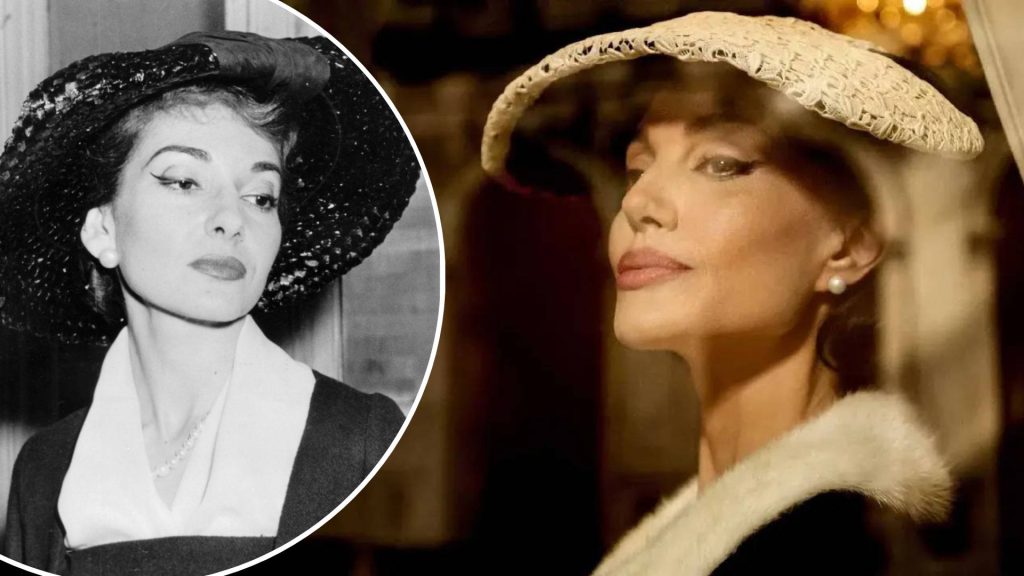Maria film review: Pablo Larraín’s biopic of Maria Callas, starring Angelina Jolie, is ‘too adoring and reverential’
3 min read

Pablo Larraín’s new film, Maria, stars Angelina Jolie as the iconic opera singer Maria Callas, continuing the director’s fascination with the glamorous women of the 20th century. Following his previous biopics, Jackie and Spencer, Larraín now tackles Callas, yet this film, while visually stunning and filled with wit, falls short in humanizing its subject, presenting a portrayal that feels more like an idolization than an intimate exploration.
The film opens with a rather conventional start: the removal of Callas’s lifeless body from her opulent Paris apartment in 1977. This somber scene quickly transitions into a flashback of her final week. By this time, Callas has retired from performing and lives under the watchful care of her devoted butler (Pierfrancesco Favino) and housekeeper (Alba Rohrwacher). Despite their dedication, Callas demands constant rearrangements of her grand piano, adding a touch of eccentricity to her character.
Callas’s butler, the film’s most empathetic figure, is concerned about her excessive medication. However, Callas is more interested in reviving her once-glorious voice. She visits an opera house to test her vocal abilities and engages in an interview with a fictional television crew. These crew members, who are actually hallucinations, serve as a device for Larraín to revisit pivotal moments from Callas’s past. These recollections are presented through varying film styles, including black-and-white sequences, depicting significant events such as her teenage performances during World War II and her dramatic debut as a last-minute replacement in Venice in 1949.
The central focus of Maria is Callas’s tumultuous relationship with Aristotle Onassis (Haluk Bilginer), starting with their first encounter in 1957 at a party. This affair, portrayed as an obsession that extends into Callas’s final days, overshadows her professional achievements and personal struggles. The film’s emphasis on this romance sometimes feels disproportionate, reducing Callas’s monumental career to the backdrop of her relationship with Onassis.
The romantic subplot, though engaging, often veers into melodrama. The film portrays their interactions with a soap opera flair, rather than the operatic grandeur one might expect. Despite this, Maria is never lacking in visual allure, thanks to its beautiful Parisian settings and Jolie’s stunning wardrobe. Steven Knight’s dialogue is sharp and memorable, but the film’s lack of urgency diminishes its impact. Knowing from the start that Callas’s week will not end in a miraculous comeback reduces the tension of her final days.
Jolie’s portrayal of Callas, while visually impressive, lacks the depth needed to fully engage with the character’s vulnerabilities. The film’s reverence prevents a more nuanced depiction of Callas’s decline. Instead, Jolie’s Callas remains impeccably dignified and poised, even when grappling with her illness and addiction. This idealized portrayal contrasts sharply with the real Callas’s more complex and relatable public persona.
Throughout Maria, there is a persistent distinction between “Maria” the person and “La Callas” the legendary diva. The film, despite its title, is more focused on the latter, offering a portrait that remains on a pedestal rather than delving into the human side of Callas. This approach ultimately makes the film feel more like a tribute to the legend of Callas rather than a deep exploration of her life and struggles.
In summary, Maria is a visually captivating film with moments of sharp dialogue and engaging historical context. However, its reverential tone and focus on Callas’s romantic entanglement with Onassis overshadow a more comprehensive examination of her life and career. The film offers a grand portrayal of an iconic figure but misses the opportunity to present a more intimate and humanizing view of Maria Callas.